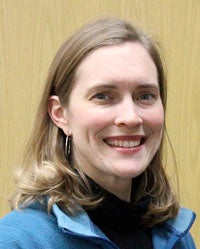It is critical to rebuild partisan gaps and fix roads
Published 9:37 am Tuesday, March 24, 2015
My Point of View by Jennifer Vogt-Erickson
We need new bridges in our country. I’m not just referring to the steel and concrete kind — 1 in 9 of which are now rated “structurally deficient.” Our politics are becoming more partisan in the U.S., stalling progress.
Representative government functions slowly by design, but the level of conflict between parties has eroded our ability to bring opposing sides together and agree on how to keep integral stuff up-to-snuff. Our physical infrastructure and political partnerships are in alarming shape.
It’s not just politicians who have divided into camps. The whole country has split into two. In our mobile society that is hitched to job opportunities more than bound by filial ties, we have lots of freedom to move where we want. It’s probably no surprise that liberals tend to move to cities and conservatives favor suburbs. Liberals tend to leave rural areas while conservatives are more likely to keep their roots in place.
Partly as a result of this self-selection, people are more likely than ever to live in communities that mirror their political views, whether Republican or Democrat.
In Bill Bishop’s edifying book, “The Big Sort: Why the Clustering of Like-Minded America is Tearing Us Apart (2008),” he compared the presidential election results from 1976 through 2004, and noted the pattern of increasing political segregation. In 1976, 38 percent of counties had a spread of 20 percentage points or more (the definition of a landslide) between votes for Carter and Ford. In 2004, more than 60 percent of counties had the same gap between Bush and Kerry votes.
I crunched the numbers for the 2012 Obama-Romney contest, and about 66 percent of counties had at least a 20 percentage point spread in votes between the two contenders. (I couldn’t find the information for Alaska’s 30 boroughs.)
On the state level, Bishop found that 19 states had a margin of 10 percentage points or more between the top candidates in the 1976 presidential election, and the average difference was 8.9. In 2004, 31 states reached that benchmark, and the average spread was 14.8 percentage points.
I ran the numbers for 2012, which was a fairly close election nationwide — Obama won with 51 percent of the vote to Romney’s 47 percent. However, 35 states had a margin of 10 percentage points or more between the two candidates. The average difference had increased to 17.2 percentage points. Only four states — Florida, North Carolina, Virginia and Ohio — had a spread of less than 5 percentage points.
Social psychology research has shown that when people gather in like-minded places, it increases polarization between groups on opposite sides of the political spectrum. Bishop states, “Now more isolated than ever in our private lives, cocooned with our fellows, we approach public life with the sensibility of customers who are always right.”
The impact of these smaller echo chambers has filtered up to the national level, where the once great deliberative body, the U.S. Congress, is in danger of becoming a seized-up rusting hulk due to its lost ability to compromise. (Only 10 percent of the 435 Congressional races were competitive in 2014.)
Few likely voters identify themselves in the political middle anymore. Instead of aiming toward the diminishing votes at the center, the parties have focused on getting their base to the polls. Voters have aligned themselves more closely with their parties’ platforms, and the parties have taken opposite stances on most issues. It’s almost like they’ve become magnets that repel each other. Remember how hard Mitt Romney had to run against Romneycare once Democrats adopted his model?
Our area is somewhat of an exception to the political cocooning trend, which I appreciate. Albert Lea is in a “toss-up” Minnesota House district that has flipped between the two major parties four times since I moved here nearly 10 years ago. Few other districts are that competitive.
What might help elsewhere? According to Bishop, a couple keys are tolerance and cross-cutting relationships. Tolerance, even to the point of apathy, creates a willingness to compromise for the common good.
Cross-cutting relationships keep opponents from becoming enemies. Rather than passing political purity tests and making campaign promises never to compromise, effective politicians — even deeply flawed ones like Lyndon Johnson — get things done through shifting alliances and fraternization.
Another possibility is political reform that challenges the two-party system. This could include instant run-off elections which boost support for third party candidates without people worrying that they “wasted” their votes. Many reforms, projects and initiatives will have to begin at the local and state levels due to Congress’s limited ability to function.
Our political sorting by geography isn’t likely to reverse itself soon, so it’s critical that we seek ways to bridge our partisan gaps and rebuild our infrastructure. Divided we fall — perhaps literally.
Albert Lea resident Jennifer Vogt-Erickson is a member of the Freeborn County DFL Party.


